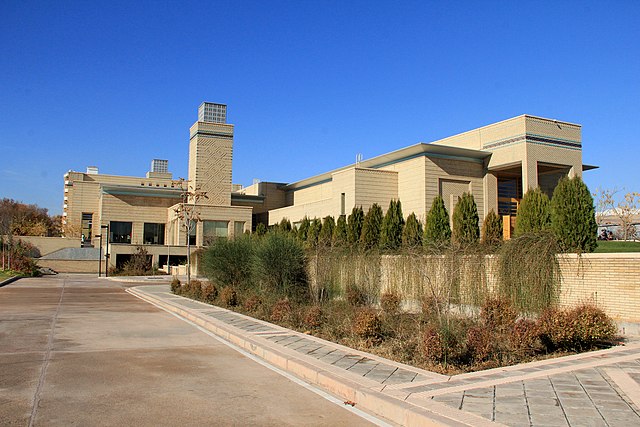Isma'ilism is a branch or sect of Shia Islam. The Isma'ili get their name from their acceptance of Imam Isma'il ibn Jafar as the appointed spiritual successor (imām) to Ja'far al-Sadiq, wherein they differ from the Twelver Shia, who accept Musa al-Kadhim, the younger brother of Isma'il, as the true Imām.
Ismaili Center in Dushanbe, Tajikistan
Al-Hakim Mosque in Cairo, Egypt, erected by al-Hakim bi-Amr Allah, an Ismāʿīlī Imām and Fatimid Caliph.
View of Alamut besieged.
Ismāʿīlīs believe the Quran has two layers of meaning, the zāhir meaning apparent, and the bātin, meaning hidden.
Shia Islam is the second-largest branch of Islam. It holds that the Islamic prophet Muhammad designated ʿAlī ibn Abī Ṭālib as his successor (khalīfa) and the Imam after him, most notably at the event of Ghadir Khumm, but was prevented from succeeding Muhammad as the leader of the Muslims as a result of the choice made by some of Muhammad's other companions (ṣaḥāba) at Saqifah. This view primarily contrasts with that of Sunnī Islam, whose adherents believe that Muhammad did not appoint a successor before his death and consider Abū Bakr, who was appointed caliph by a group of Muhammad's other companions at Saqifah, to be the first rightful (rāshidūn) caliph after Muhammad. Adherents of Shīʿa Islam are called Shia Muslims.
Ḍarīẖ over ʿAlī's qabr (grave), Sanctuary of Imām ʿAlī, Najaf (present-day Iraq)
Kalema at Qibla of the Mosque of Ibn Tulun in Cairo, Egypt, displaying the phrase Ali-un-Waliullah (علي ولي الله: "ʿAlī is the Wali (custodian) of God").
Jamkaran Mosque in Qom, Iran, is a popular pilgrimage site for Shia Muslims. Local belief holds that the 12th Shīʿīte Imam—the promised Mahdi according to Twelvers—once appeared and offered prayers at Jamkaran.
Shia Muslims gathered in prayer at the Shrine of Imam Ḥusayn in Karbala, Iraq








